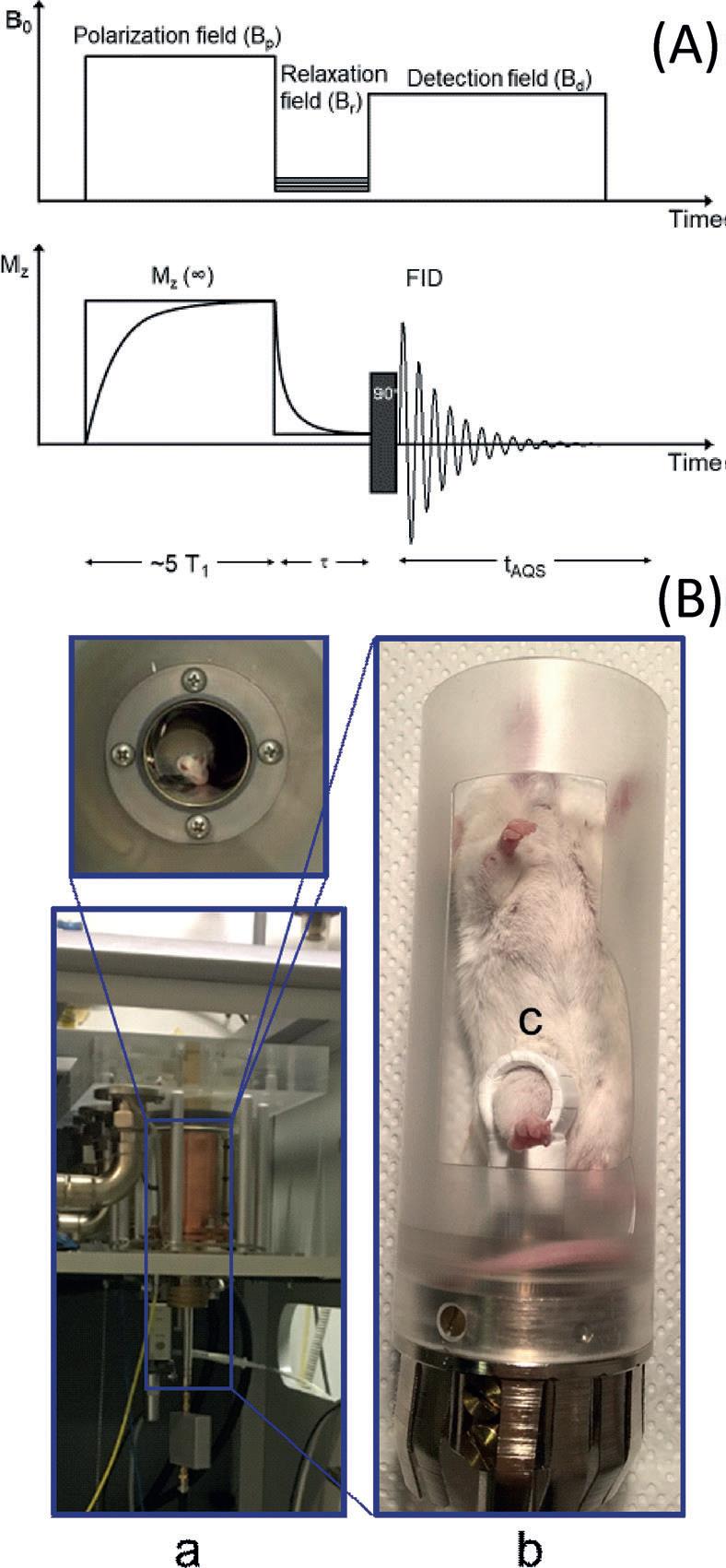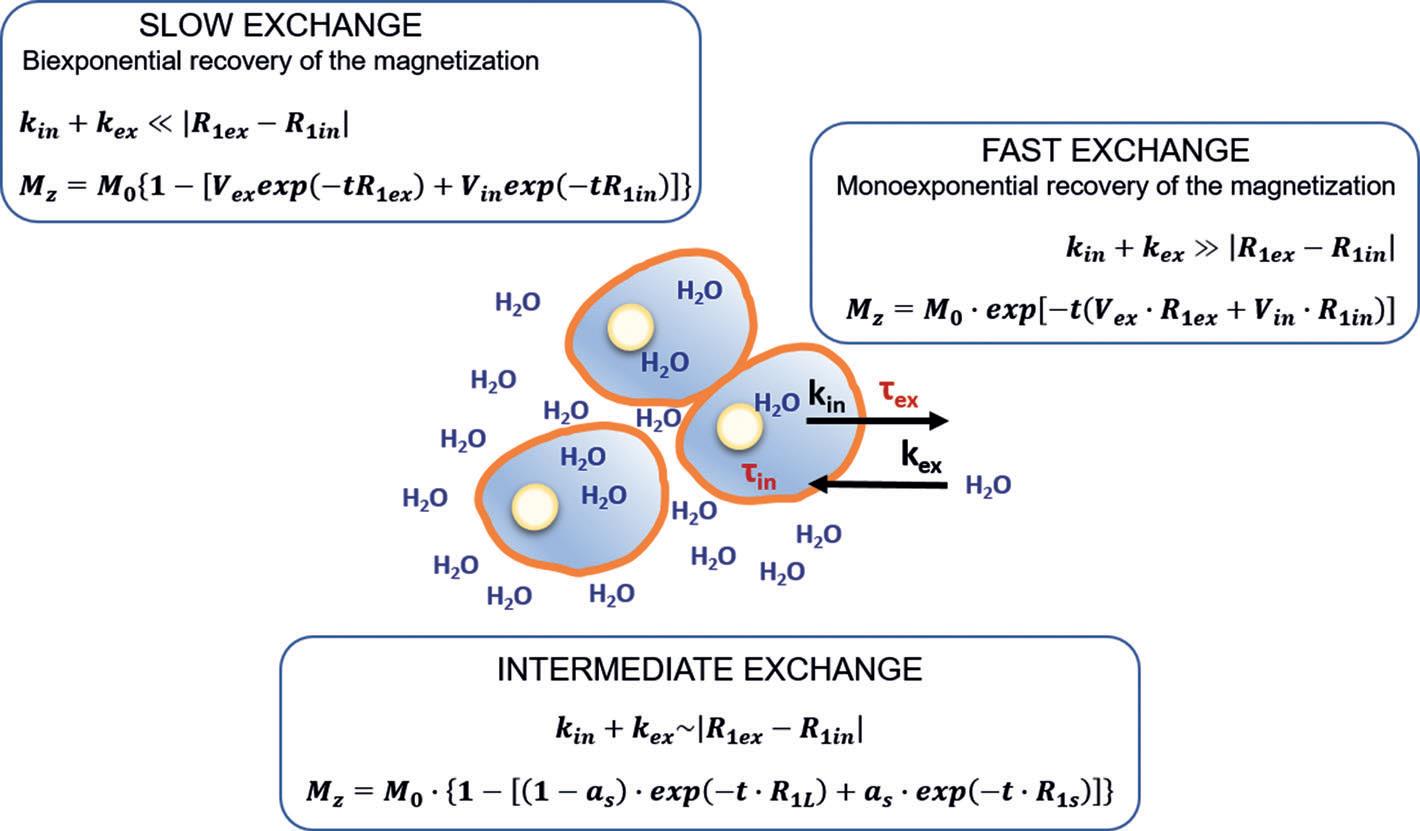It was established through in vivo T1 measurements at low magnetic fields that tumour cells display proton T1 values that are markedly longer than those shown by healthy tissue.

Moreover, it has been found that the elongation of T1 parallels the aggressiveness of the investigated tumour. The T1 lengthening is associated with an enhanced water exchange rate across the transcytolemmal membrane through an overexpression/upregulation of GLUT1 and Na+/K+ ATPase transporters. It follows that the intracellular water lifetime represents a hallmark of tumour cells that can be easily monitored by measuring T1 at different magnetic field strengths ranging from 0.2 to 200 mT.
 Figure: The water exchange regime and the resulting
MZ value in a schematic representation of the
relationship between the compartmentalized system formed by the
IN and the EX space. In the case of intermediate exchange, aS
and R1S are the fraction and the rate constant for the apparent
component with the shorter T1 (R1S=1/T1S); (1 aS)=aL
and R1L are the fraction and rate constant for the apparent
component with the longer T1 (R1L=1/T1L), and t is the running
time for recovery by relaxation.
M.R. Ruggiero et al, Angew. Chem. Int. Ed. Engl.
57, 7468 (2018)
Figure: The water exchange regime and the resulting
MZ value in a schematic representation of the
relationship between the compartmentalized system formed by the
IN and the EX space. In the case of intermediate exchange, aS
and R1S are the fraction and the rate constant for the apparent
component with the shorter T1 (R1S=1/T1S); (1 aS)=aL
and R1L are the fraction and rate constant for the apparent
component with the longer T1 (R1L=1/T1L), and t is the running
time for recovery by relaxation.
M.R. Ruggiero et al, Angew. Chem. Int. Ed. Engl.
57, 7468 (2018)
Group Leaders:


